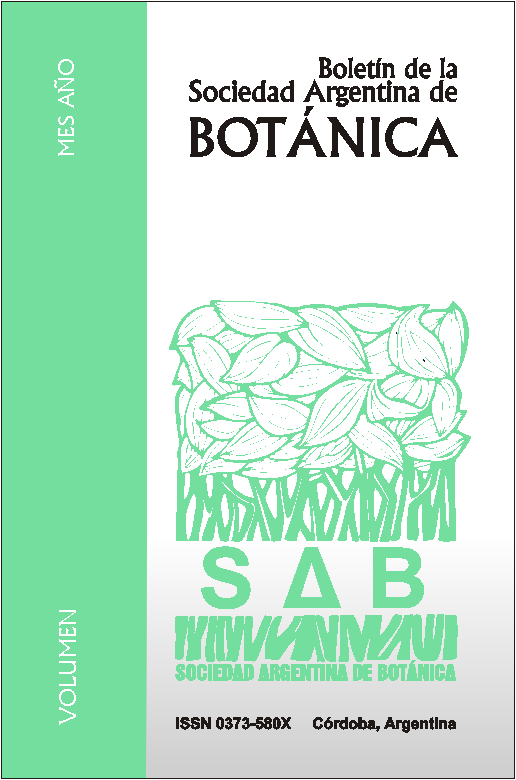Regeneration of bulbs of Hippeastrum striatum and Habranthus brachyandrus (Amaryllidaceae) subjected to longitudinal cutting
DOI:
https://doi.org/10.31055/1851.2372.v53.n4.21983Keywords:
Asexual progeny, bulblets, vegetative propagation.Abstract
Regeneration of bulbs of Hippeastrum striatum and Habranthus brachyandrus (Amaryllidaceae) subjected to longitudinal cutting. As an alternative for increasing the vegetative propagation of two ornamental promising species, Hippeastrum striatum and Habranthus brachyandrus, the capacity of vegetative regeneration of bulbs subjected to cut, was analyzed. For both species the number of bulblets was greater when the mother bulb was cut. In H. striatum 13 - 20 regenerated bulblets were obtained with diameters between 1.02 and 1.16 cm (x = 1.09 cm). In H. brachyandrus 16 - 23 new bulblets were obtained with diameters between 0.87 and 0.94 cm (x = 0.91 cm). The number of leaves in new bulblets varied between 5 to 0 leaves/bulb in H. striatum and between 3 to 0 in H. brachyandrus. For bulbs that were not subjected to cutting (control treatment), there was no production of bulblets in H. brachyandrus, instead, in H. striatum smaller size bulblets were obtained without signs of leaves development. The mechanical induction of bulblet development from mother bulbs, had a highly significant effect in the variables evaluated, stimulating the activation of basal scale buds giving rise to an asexual progeny of clonal origin.Downloads
Published
Issue
Section
License
Provides immediate and free OPEN ACCESS to its content under the principle of making research freely available to the public, which fosters a greater exchange of global knowledge, allowing authors to maintain their copyright without restrictions.
Material published in Bol. Soc. Argent. Bot. is distributed under a Creative Commons Attribution-NonCommercial-ShareAlike 4.0 International license.





